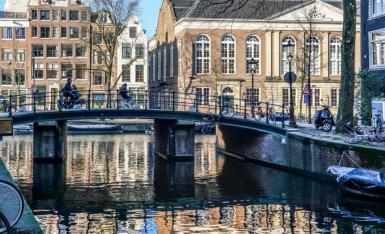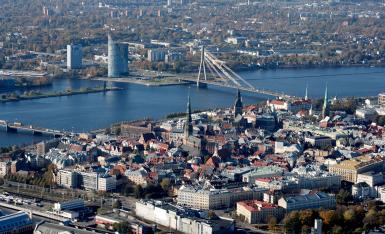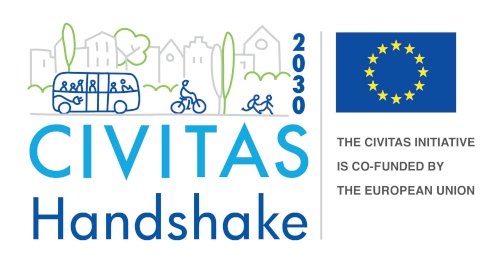Planning, Regulations and Standards
Cycling Priorities and Segregated Routes
Many cities have provided cycle lanes where it has been easiest to do so - on wide streets, without having to remove car parking. Although these have provided at least some limited facilities for cycling, these have often not coincided well with where there has been the demand for cycling. Expectations from bicycle riders have also risen in light of greater awareness of European best practice examples in terms of segregation cycling from other general traffic. Having walking and cycling as the most common mode of transport will be the desire (or current situation) on many city streets, although space allocated to them will often be out of balance with this. Strong design standards are essential so cycling can be accommodated on all different types of street, and for the creation of "complete streets".
Making room for cycling
Whilst cities that are late adopters of cycling infrastructure can leapfrog the learning that has occurred in more advanced cities, they also need to start from a lower base of acceptance for space being used to support cycling. In many instances, cities can face a "Bikelash" from car users who have until now dominated these streets and spaces . Handshake cities will learn how cities such as Amsterdam are continuing to take away space from cars, to improve their public realm and the experience and safety of cycling in cities. This includes strategies to better manage, or remove, car parking to deliver public realm and cycling enhancements.
Cities using this solution

Leader: Amsterdam
Amsterdam has implemented a number of measures in this regard.
In 1992 the people of Amsterdam opted for low car traffic in the city center, after which building plans for parking garages were scrapped. It was also decided to reduce car traffic and a start was made with the expansion of paid parking for inhabitants and visitors. Since then car parking charges have been introduced in the whole city. Recently the city council has decided to create an even more low car traffic city. In the coming years 10,000 car parking spaces on the streets will be removed.
+
From the 1980’s Amsterdam realized separated bicycle paths along 50 km/h speed limit roads. About 95% of all city streets and roads are maximum 30 km/h. With this speed cyclists and cars can safely mix together. On such roads there are no cycling facilities. Recently the city council has decided to create an even more 'low car traffic city'. The reclaimed public space that is released is partly used for more cycling space and improving bicycle intersections. Cyclists have priority at intersections when they cycle along and on priority roads for public transport and/or cars
+
In accordance with the Amsterdam Framework for Traffic Networks Policy, cyclists will get priority on the most important bicycle routes (Plus Network Bicycle). Car and public transport will have priority on the Plus Networks for cars and public transport.
+
Amsterdam has taken measures and still does whenever adjustments were/are needed before regular maintenance is carried out. There are different possibilities:
- Creating bicycle streets, if necessary, in combination with reduced car traffic,
- Providing more cycle space by allowing cars to drive on tram ways,
- Implementing more low car traffic measures, based on the new low car traffic policy and the Amsterdam Framework for Traffic Networks Policy.

Follower: Bordeaux
Bordeaux Métropole has at its disposal a guide on public area planning which is the reference for the road system designers. They would like to update the cycling planning part on the basis of new standards that they could learn through Handshake. The objective must be to create wider and higher capacity bike lanes and smaller car lanes.

Follower: Helsinki
The city declared they have a lot to learn when it comes to giving cyclist priority in traffic. There are efforts made already but there is room for improvement. Learning from Copenhagen on how they did it and what has worked/not worked will accelerate the process and make Helsinki a better cycling city.

Follower: Riga
Concerning the reduction of car mobility, Riga continues to create a detailed long-term action plan on how to ensure that progressive priority is given to cycling transport. Firstly, it is necessary to make a logical car and bicycle route network, not to burden additionally the already overloaded transport network. Secondly, new, wise and innovative solutions would be necessary to apply within Riga city, taking into account the current street planning.
